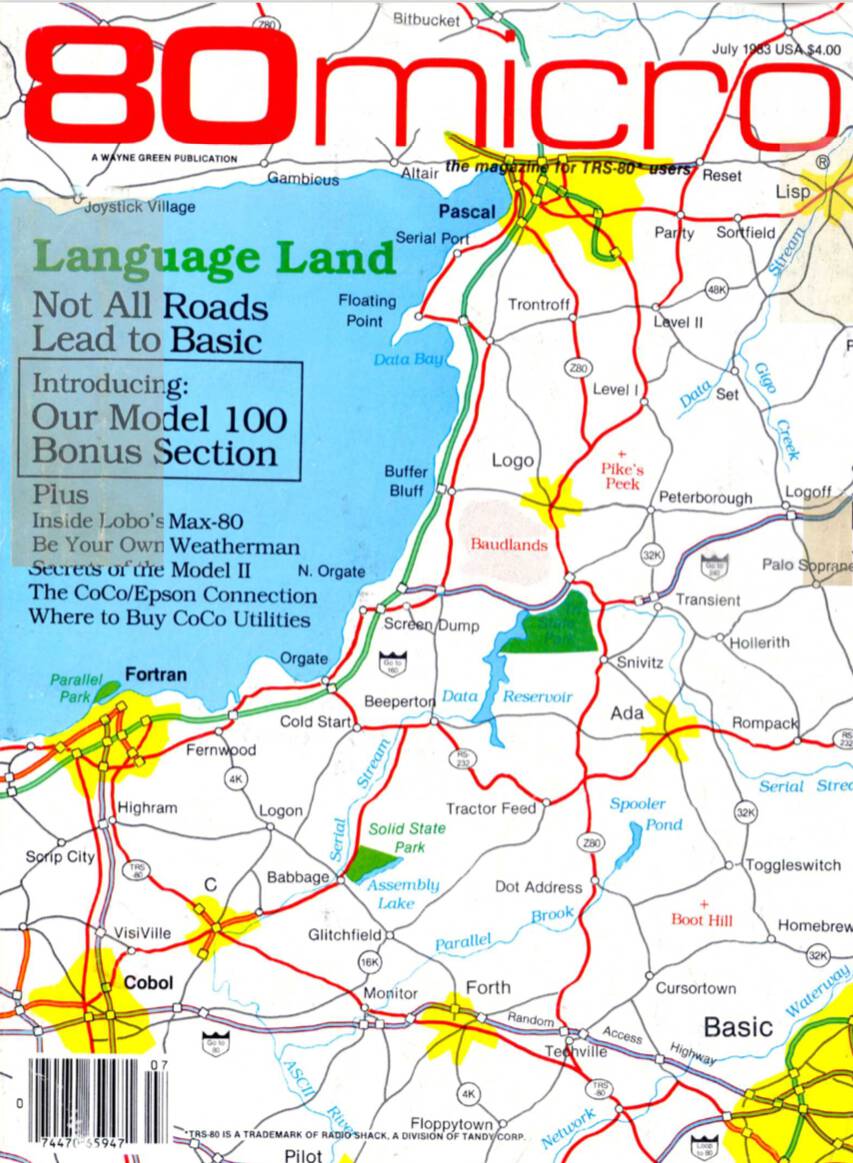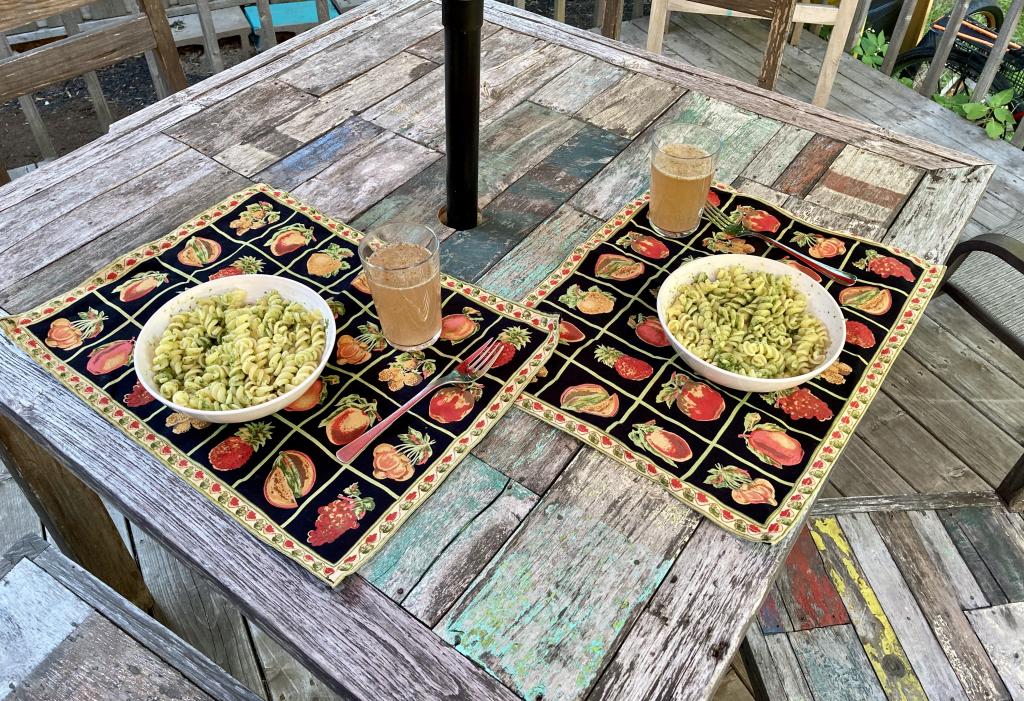I’m sure I must have seen the cover of the July 1983 issue of 80 Micro at the time, but its whimsy was likely lost on my 17 year old self.

I especially appreciate that at the heart of the whimsical map lies Peterborough, the actual home of 80 Micro, and, for a time, the heart of the computer magazine publishing region of North America (I have more than a few colleagues, past and present, who spent time working with Wayne Green over the years).
Bruce Stephenson is credit as the illustrator for the cover.
From The Guardian, How you attach to people may explain a lot about your inner life:
Things get even more puzzling if you consider the sheer number of therapies on offer and the conflicting methods that they often employ. Some want you to feel more (eg, psychodynamic and emotion-focused approaches); others to feel less and think more (eg cognitive behavioural therapies, or CBT). The former see difficult emotions as something that needs to come out, be worked through and re-assimilated; the latter as something to be challenged and controlled through conscious modification of negative thoughts.
One of the things I never got to the bottom of when I was involved with Home & School was whether or not the the psychologists in Prince Edward Island schools are hired based on an attachment to a particular school of thought regarding psychology: that there are some psychologists who encourage feelings, and others who don’t, seems like a pretty significant divide to leave to chance.
Starting the second-last Sunday of July the construction industry in Quebec goes on vacation for two weeks.
V.S. Naipaul about his cat (and also about grief) in The New Yorker:
The kitten was absolutely terrified. It had had an up-and-down life for many days and had no idea what was coming next. It tried now to run away, though there was no place for it to run to. It dug its little claws into the screen door and raced up to the ceiling of the utility room. That was as far as it could go, and I reached up and brought him down. Something extraordinary then happened. It was as though, feeling my hand, he felt my benignity. He became calm, then he became content; he was happy to be in my hand (not much bigger than him), so that in a few seconds, guided by a cat’s instinct alone, he moved from terror to trust. He ran up my arm to my shoulder; when I introduced him to some of my lunchtime guests, he sought to do the same with them. I knew nothing about cats. But he was easy to like.
I have had my time among the cats, and his words strike a chord. If I hadn’t suddenly become very allergic to cats in my mid-20s there might very well be a cat resident here now.
No More Saviors, by Society If Dads:
A savior is supposed to do something no one else can, otherwise their semi-divine services wouldn’t be needed. They supposedly have more of something—faith, vision, power, expertise, authority, connections, plans—than others and therefore can do more alone than the collective they promise to rescue and redeem. They are not exactly part of the group they would deliver from peril—they stand apart in their greater capacity and knowledge and foresight: they are not quite among, they lead, speaking for, not with. The problem is that there are no such people on earth.
I came through this doorway via other means, but I agree: salvation lies in the group.
Homemade pesto (Heartbeet basil, Brighton Clover Farm pine nuts, Riverview Country Market Parmesan and garlic) with Island strawberry and basil soda. Perfect summer supper.

My mind often turns back to May 26, 2020, when Hon. Peter Bevan-Baker opened the then-“emergency session” of the Legislative Assembly with a question to the Premier:
Leader of the Opposition: My first question is to the Premier and it’s about how you’re doing. It’s been tough to work under these circumstances for all of us, but particularly tough for those who have added burdens related to their jobs.
So, Premier, how are you feeling?
Speaker: The hon. Premier.
Premier King: Thank you very much, Mr. Speaker.
I’m feeling fine. I don’t feel any differently than any Prince Edward Islander does. I think we’ve all been through a difficult time, we’ve all had difficult jobs and mine is probably more public than most, but I’ve been doing fine.
Like all of you in here, I worry more about my family than I do about how I’m feeling, but very kind of you to ask. I’m doing well and I hope you are, too.
“So, Premier, how are you feeling?” was such a generous way to open the session; while things got considerably more debatey later that same day and, indeed, over the following 26, that exchange established a bedrock of caring and compassion on which everything else was built.
Last month I generated a self-signed certificate like this:
openssl req -new -x509 -nodes -out example.com.crt -key example.com.key
Yesterday, a month later, things depending on this certificate started to break, and I realized it was because the certificate had expired: apparently the default expiration date is a month.
So I regenerated it, adding -days 3650 to set the expiration date 10 years into the future.
openssl req -new -x509 -days 3650 -nodes -out example.com.crt -key example.com.key
I double-checked the expiration date with:
openssl x509 -enddate -noout -in example.com.crt
And was surprised to see this returned:
notAfter=Jul 19 18:42:13 2030 GMT
Surely something must be broken, I thought: 2030 isn’t in 10 years.
Oh, right, 2030 is in 10 years.
 I am
I am